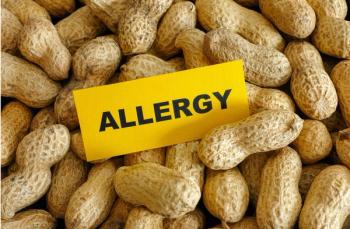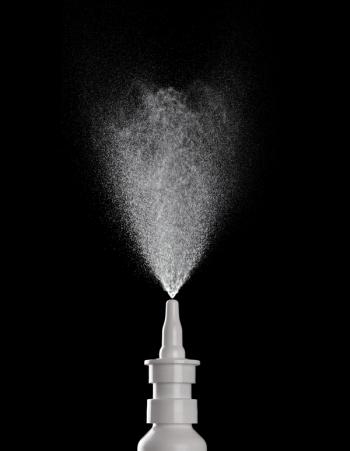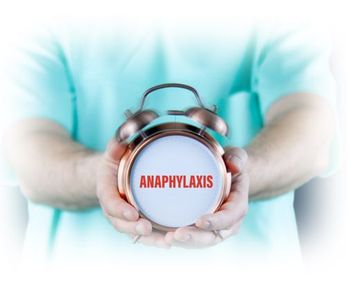
Autumn Allergy Challenge: Round 3
Will steroids restore the sense of smell? Where is mold a year-round allergen? What US state makes the best home for persons with atopy? Answers and more questions in our Autumn Allergy Challenge.
Question 1:
Answer on next page »
Answer: B. False
According to 2015 guidelines issued by the American Academy of Otolaryngology, Head and Neck Surgery,1 clinicians should not routinely use sinonasal imaging in patients with symptoms of allergic rhinitis. History, physical and allergy testing constitute the key items needed to make a diagnosis of allergic rhinitis, with specific IgE mediated allergen testing reserved for confirmatory testing. No radiologic findings are specific for the diagnosis of allergic rhinitis, and there is no research evidence to support its utility, according to the guidelines.1 Radiographic testing may have a role in the diagnosis of rhinosinusitis (especially recurrent and chronic), nasal polyps, and suspected tumors. Routine imaging in allergic rhinitis may increase costs and expose patients to unnecessary radiation.1
Next question »
Question 2:
Answer on next page »
Answer: C. Mold
The length of the allergy season depends on geography and climate. In tropical areas where some types of trees flower all year, certain seasonal allergens may be considered perennial allergens. In temperate regions, mold is considered to be both a seasonal and a perennial allergen. Sporulation of outdoor molds increases in spring and peaks in July in warmer climates, while the peak occurs in October in colder climates. In the South and on the west coast, outdoor molds are found throughout the year. Indoor molds are usually considered to be perennial allergens.1, 2
Next question »
Question 3:
Answer on next page »
Answer: B. False
A recent systematic review3 found some evidence that topical steroids can improve olfactory dysfunction in seasonal allergic rhinitis. Very limited evidence was found for the efficacy of antihistamines.3 Loss of the sense of smell is a key symptom in allergic rhinitis. Although the dysfunction is not severe in most patients, between 20% and 40% of allergic rhinitis sufferers may experience some loss of smell, and the problem increases with the duration of symptoms. Blockage and congestion of the nasal airways as well as inflammation can contribute to loss of the sense of smell. Olfactory dysfunction can interfere with eating and the enjoyment of food, and can also affect social functioning.3
Next question »
Question 4:
Answer on next page »
Answer: F. All of the above
Eosinophilic esophagitis is a chronic condition in which eosinophils infiltrate the esophageal mucosa, causing fibrosis and dysfunction. Young children may show feeding refusal, while older patients may experience abdominal pain, vomiting, GERD-like symptoms, dysphagia, and food impaction. In the majority of patients, the disorder is triggered by food, especially milk, egg, wheat, and soy. Case reports have also described the development of eosinophilic esophagitis after exposure to grass, molds, dust, and sublingual immunotherapy, with resolution of the disease after receiving subcutaneous immunotherapy. A recent study in 1180 pediatric patients with eosinophilic esophagitis4 found that 14% (n=160) had suspected aeroallergen triggers, and that 100% of these patients had allergic rhinitis while 75% had asthma.4 These patients had a clear seasonal variation in their symptoms, with at least two times increase in eosinophilia during peak allergy season.4
Next question »
Question 5:
Answer on next page »
Answer: D. A (A. artemisiifolia) and B (A. trifida)
The most clinically relevant ragweed species worldwide are common ragweed (A. artemisiifolia) and great ragweed (A. trifida), because of their high allergenic potential and widespread distribution. A. maritime is mostly found in Israel and the Mediterranean, where it causes the most severe symptoms in allergic persons in these areas. Ragweed, of the genus Ambrosia, is native to North America and has recently spread to Europe and Asia. Globalization and climate change have contributed to a longer growing season, as well as more opportunities for long distance pollen dissemination along global wind and trade routes.5
Next question »
Question 6:
Answer on next page »
Answer: B. Vermont
In a recent study that used data from the 2007 National Survey of Children’s Health, National Climate Data Center and Weather Service, and National Allergy Bureau, states in the south and southeastern United States had the highest prevalence of hay fever. Specifically, Minnesota, Vermont, and Alaska had the lowest prevalence of hay fever. States with very hot, dry, and sunny climates had higher pollen counts and higher prevalence of hay fever. Contrariwise, states with wet and rainy conditions also had higher prevalence of hay fever, compared to states with lower temperatures, more indoor heating, lower precipitation, and lower pollen counts. 6
Next question »
Question 7:
Answer on next page »
Answer: E. All of the above
Omalizumab is an anti-IgE antibody that is FDA approved for the treatment of adults and adolescents with moderately severe to severe allergic asthma. A recent meta-analysis found that omalizumab therapy resulted in improved symptom relief, less need for rescue medication, and improved quality of life in people who suffered from perennial and seasonal rhinoconjunctivitis that was not well controlled on conventional therapy. The most frequently reported adverse events were injection site reactions, headache, and cough.7 Omalizumab is expensive, costing up $3000 or more per month. Clinical trials and post-marketing surveillance have reported rare anaphylactic or anaphylactoid reactions with omalizumab use.8 For this reason, omalizumab may only be administered in a healthcare setting where the patient can be observed.8,9 In September 2014, the FDA issued a safety announcement10 about a slightly increased risk of problems with the heart and blood vessels supplying the brain in patients who received omalizumab, and added these potential risks to the drug label.10
References:
1. Seidman MD, Gurgel RK, Lin SY, et al . Clinical practice guideline: Allergic rhinitis.
2. American Academy of Allergy & Imunology.
3. Stuck BA, Hummel T. Olfaction in allergic rhinitis: A systematic review.
4. Ram G, Lee J, Ott M, et al. Seasonal exacerbation of esophageal eosinophilia in children with eosinophilic esophagitis and allergic rhinitis.
5. Ihler F, Canis M. Ragweed-induced allergic rhinoconjunctivitis: current and emerging treatment options.
6. Silverberg JI, Braunstein M, Lee-Wong M. Association between climate factors, pollen counts, and childhood hay fever prevalence in the United States.
7. Tsabouri S, Tseretopoulou X, Priftis K, Nitzani E. Omalizumab for the treatment of inadequately controlled allergic rhinitis: a systematic review and meta-analysis of randomized clinical trials.
8.
9.
10.
Newsletter
Enhance your clinical practice with the Patient Care newsletter, offering the latest evidence-based guidelines, diagnostic insights, and treatment strategies for primary care physicians.

























































































































































































































































































